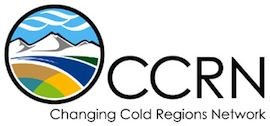Research Context and Overview
This Network aims to understand, diagnose and predict interactions amongst the cryospheric, ecological, hydrological and climatic components of the changing Earth system at multiple scales with a geographical focus on Western Canada's rapidly changing cold interior.
The cold interior of Western Canada east of the Continental Divide has one of the world's most extreme and variable climates and is experiencing rapid environmental change. In a region which includes a multiplicity of globally-important natural resources and sustains 80% of Canada's agricultural production, changing climate is changing the land, its vegetation and its water. There is an urgent need to understand the nature of these changes, and to develop the improved modelling tools needed to manage uncertain futures. The CCRN brings together the unique expertise of a team of 50 university and government scientists and international collaborators from multiple disciplines to address these challenging and globally-important issues.
CCRN integrates existing and new experimental data with modelling and remote sensing products to understand, diagnose and predict changing land, water and climate, and their interactions and feedbacks, for this important region. CCRN uses a network of
Current ability to model these effects is limited, yet models are essential to understand and manage change. CCRN works with government, industry, water managers, First Nations communities and other stakeholders to deliver the improved hydrological, ecological and climate modelling tools needed to understand, predict and manage uncertain climate and water futures. CCRN addresses issues of importance not only to Canada, but also the world, and continues to contribute to the work of Canada's Federal, Provincial and Territorial governments, NASA and the Canadian Space Agency, and the World Climate Research Programme.
